Text
Great post,
I must admit that I am guilty of slacktivism as are most social media users but you raise a great point. We connect on a global scale through digital networks that give us access to numerous tragic news stories from across the globe which are out of our physical reach, what real power does that leave us with besides showing solidarity through retweets, or the addition of the French flag to our profile pic?
Much like your study of Greek citizens using social media to organise protests over naming rights with Macedonia one of my blogs touched on how Cambodians choose to use social media to mobilise physical protest and enact their rights as democratic citizens of Cambodia.
Both these cases show that the true affordance of digital networks is in connecting citizens to organise and protest in cities and streets around the world.
Just a quick link to my blog entry if you're interested: An activist holiday in Cambodia
I predict a riot! I predict a riot!

Activist social media use today is what newspapers, posters and leaflets were to the labour movement (Gerbaudo 2012, p. 4). A way of spreading a message and garnering support to affect change. By utilising Facebook groups, tweets, and even Instagram posts, activist leaders are able to easily create groups of likeminded individuals who can participate across geographical boundaries and coordinate them to undertake collective action (Shirky 2011).
But is it actually achieving change?

The 2012 Kony movement certainly didn’t. It cleverly used a post akin to a music video to create a sense of social norming, and incite a call to action to have Kony captured and stop the Lord’s Resistance Army. Additionally, it placed deadlines on participation, fostering a culture to ‘act now or miss out’ (Burrowes 2012). This pressure resulted in both slacktivists liking or commenting to demonstrate support for the cause with minimal effort, and clicktivists who despite their supportive stance, could do little more than like and share the post. Neither party could contribute anything toward actually capturing Kony besides funding the movement through donations and purchasing merchandise. I myself fell into the clicktivist category. I experienced the intended shocked response. I did feel bad about Kony’s exploitation and endangering children. I wanted to help and make it all stop. But I didn’t see how giving money to an organisation I had never heard of just so I could wear a red t-shirt was going to help.

This was the central problem. Invisible Children had done a terrific job viralising the issue and gaining support, but they left supporters like myself with absolutely no practical avenue to effect change and facilitate Kony’s capture. Despite raising $28 million nothing was achieved and no progress was made as Kony remains at large and the LRA is still in operation (Taylor 2014).
Unfortunately the failure of the movement was not enough to stop new slacktivist trends immerging. Plastering Facebook filters over profile pictures quickly became the next wave of slacktivist participation, with the practice going viral after many terrorist attacks like the 2015 Paris attacks. Whilst this did much to create a global sense of unity and afford bystanders the sense of having ‘done their bit’, it did nothing to change the victims’ reality. In fact, the filters recieved much backlash with many accusing Facebook of ranking human suffering as no filters were created for victims of the attacks in Lebanon and Syria (Bondarenko 2017).

This year, Greek activists successfully harnessed social media’s power to organise protests against compromising with Macedonia over naming rights. Whilst police officials and protest organisers disagree on attendance numbers, what stands out is organisers’ success in bringing citizens from all over Greece together in Athens to show their support. In response to the pressure from protesters, the government has remained strong and knocked back Macedonian proposals deemed to be appropriating Greek heritage (ABC News 2018).
So, can social media activism achieve lasting change? I think so. But only if those truly motivated to effect change are given a viable avenue to do so.
youtube
References
ABC News 2018, ‘Greek hold massive rally in Athens to protest over Macedonia name dispute’, ABC News, 5 February, viewed 18 May 2018, <http://www.abc.net.au/news/2018-02-05/greeks-rally-in-athens-to-protest-use-of-the-name-macedonia/9395502>.
Bondarenko, V 2017, ‘Facebook has quietly stopped offering flag profile picture filters after terrorist attacks’, Business Insider, 8 June, viewed 18 May 2018, <https://www.businessinsider.com.au/facebook-stops-offering-flag-profile-picture-filters-after-terrorist-attacks-2017-5?r=UK&IR=T>.
Burrowes, T 2012, ‘Kony 2012: The biggest social media experiment in history ends in failure - so why is no one talking about it?’, Mumbrella, 23 April, viewed 18 May 2018, <https://mumbrella.com.au/kony-2012-the-biggest-social-media-experiment-in-history-ends-in-failure-so-why-is-nobody-talking-about-it-86939>.
Gerbaudo, P 2012, Tweets and the streets : Social Media and Contemporary Activism, Pluto, London.
Taylor, A 2014, ‘Was #Kony2012 a failure?’, The Washington Post, 16 December, viewed 18 May 2018, <https://www.washingtonpost.com/news/worldviews/wp/2014/12/16/was-kony2012-a-failure/?utm_term=.caf370d6127f>.
13 notes
·
View notes
Text
@dotcomwriteon Great blog, it seems that we both have the same train of thought when it comes to escapism and gaming. I can understand the appeal of escapism and community when you say “forget being a desk jockey by-day and be a total bad-ass by night” that sounds pretty awesome, sign me up! Gamer’s can become a part of a community where they can to an extent dictate and control their self-identity from appearance and even explore inter-personal interactions which are not possible in real life.
Personally, I have never really been drawn to networked games, I have a friend that keeps telling me "ya got to get onto Fortnite". I just don't see the appeal of spending my free time running around a virtual battleground but that's just not me.
P.S. Really great read and very on point with the pop-culture references.
What’s the name of the game?
This week let’s talk about social gaming. Now before you go clicking away because gaming ‘isn’t your thing’, let me say, it’s not mine either. In truth, I’ve never actually played one and the closest I’ve come to social gaming was slamming Tazos in my primary school yard. Who remembers these bad boys?
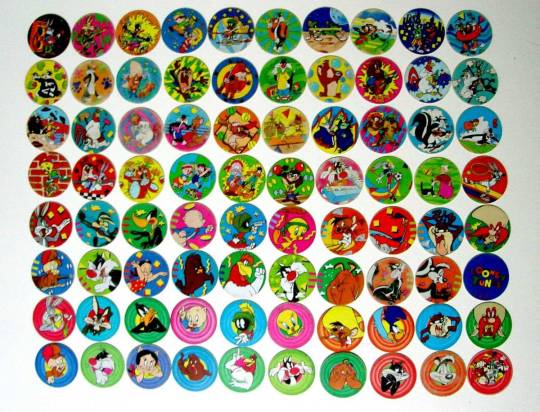
But I digress. As a non-gamer frankly, I’ve always struggled to see the appeal of regular social gaming. In the past, I’ve asked some of my WOW playing buddies, ‘What’s so interesting? Isn’t it just repeating the same thing over and over?’ They usually launch into a tirade about “defending the alliance“, yadda yadda yadda. Around about the time I hear the word ‘Orc’ my eyes glaze over and regret sinks in.

And then this week (Zwart & Humphrys 2014) provided that elusive ‘uh-huh’ moment. Gaming isn’t about the vanquishing of trolls or passing another level. It’s all about Ferdinand Tönnies’ sense of community. Sure those details make the game interesting and might be the difference between throwing something else into the console. But the draw is the natural will to be a part of something greater by achieving objectives with likeminded individuals thereby forging bonds (Tönnies & Loomis 2017, p. 33).
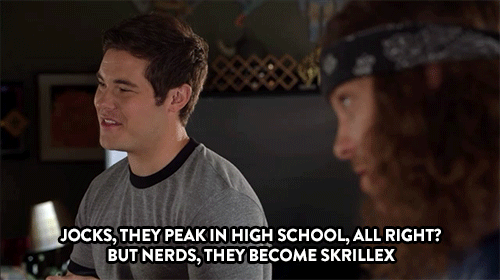
For too long gaming has been confined to the stereotype of a bunch of nerdy teenage boys, sitting in dark rooms wasting their time getting lost in virtual fluff. Research conducted by the Entertainment Software Association shows that whilst most gamers are males, females are well represented and only 29% of all gamers are under the age of 18 (Lavandier 2016).

The figures clearly illustrate much myth still surrounds not only the perception of gaming but also of gamers entirely. I can’t help but wonder, is the draw for all these demographics escapism? With our increasingly demanding day-to-day lives we all need an outlet of escape and satisfaction. Is it possible the attraction lies in the opportunity for players to control their ‘destiny’ and manufacture a virtual existence which satisfies them more than reality? After all, the real-world places limitations on us all. We can’t always control the direction our jobs take; financial constraints can dictate time and leisure activities. In virtual worlds, players must abide by codes of conduct yet are afforded the opportunity to assert authority through self-governing bodies in a way which simply isn’t possible in real life (EVEOnline, 2014).
Who wouldn’t be tempted to forget being a desk jockey by-day and be a total bad-ass by night?

But is there a stronger force at play?
Neuroscientists at the Florey Institute of Neuroscience and Mental Health have found compulsive gaming activates the brain’s rewards system. By levelling up, unlocking new status features or completing tasks, the brain releases dopamine resulting in an exciting, addictive rush, mimicking the neurological patterns of drug addiction (Lauder 2017). Even one of virtual realities’ fathers, Jaron Lanier, has admitted many in his field are regretting their technological contributions, likening the predicament to a psychological experiment on rats gone wrong (Aiello 2018).
Posing the question, ‘Gaming - friend or foe?
Keep reading
4 notes
·
View notes
Text
Hi Chanelle,
As someone over 25 actually even Tamagotchi was after my time (dear god I’m old!) I think this is a really good question, it is suggested that by 2022 there will be 661.6 million active gamer’s worldwide (Statistica 2018), that's a lot of time spent in front of screens. It makes me wonder how the health and fitness industry can take advantage of the gaming sector? A few years ago 'Wii fit' was a massive craze that took advantage of physical activity and gaming networks, though it seems the 'Wii fit' craze is long gone. While searching I found the website fitness-gaming.com which is dedicated to the development of fitness gaming/technology I'll be interested to see if any of these ideas take off.
Reference list
Fitness gaming 2018, Fitness Gaming News, Fitness gaming, viewed 29 May 2018, <https://www.statista.com/outlook/212/100/online-games/worldwide#market-revenue>.
W10: The culture of social gaming
Social gaming is a term many people may feel familiar with.
Me? Not so much. In fact, there is zero familiarity here - so I’m going to start with a light refresher on what this term actually encompasses:
Social gaming; game applications integrated into social networking platforms (Hou, 2011).
This term still isn’t overly familiar to me. The most ‘social’ we got with our gaming as children was discussing how healthy our Tamogotchi’s were in the school playground. If you’re also over 25 - you might recall how hard it was to keep yourself healthy as a child let alone remember to feel a fictional pet. The struggle was real.

While I appreciate the definition above is relatively broad, I want to explore the reality behind the social gamers that choose to play in their spare time over actual non-digital human interaction – because I have heard there are millions around our globe that live for this lifestyle.
One question that pops into my mind – and again, I reiterate: I have no personal interest in social gaming, probably due to my childhood spent without hundreds of social platforms available to me, so this is only my opinion – is what are the health or social benefits these gamers are missing out on?
Facebook opened its platform to developers over 10 years ago, allowing gaming developers to jump onboard the social revolution (Swinburne Online, 2018) and subsequently, the trend has reached new heights. However, what about the facts surrounding the antisocial aspect or inactivity of online gaming culture?
Obesity rates in children have tripled in the last 30 years, with research concluding a strong link to sedentary lifestyles such as those devoted to online gaming (Bond, Calvert, and Staiano, 2013). Studies have also recently found that children aged between 8-18 years typically expose themselves to online gaming for 90 minutes per day (Rideout, Foehr & Roberts, 2010), exposing them to a MUCH higher risk of adolescent obesity and a decreased quality of life. Furthermore, researches have confirmed that those heavily associated with online gaming communities experience negative impacts to social engagements and at times may ‘withdraw’ in social circumstances which do not allow the anonymity or circumstantial control that online gaming typically affords them (Hou, 2011).
For me, this begs the question: how will future innovations and technologies positively or negatively impact this gaming culture – will it be enhanced, or redirected to encourage physically activity? Will societies value wellbeing one day influence, or eventually change the notion of gaming?
I guess only time will tell.
Share your thoughts on social gaming, and how you see this evolving in our future.
References
Rideout V, Foehr U, Roberts D, 2010, Generation M2: Media in the lives of 8-18 year olds. Menlo Park, CA: Kaiser Family Foundation, viewed 28 May 2018, Link
Bond, B, Calvert, S, and Staiano, A, 2013, Electronic Gaming and the Obesity Crisis, New Dir Child Adolesc Delv: 2013 Spring, vol. 139, pp. 51-57, Link
Swinburne Online, 2018, ’10.2 Social Gaming: Playing the crowd’, Swinburne Online: MDA20009, viewed 28 May 2018, Link
Hou, J, 2011, ‘Uses and gratifications of social games: Blending social networking and game play’, First Monday Journal, vol. 16, no. 7, viewed 28 May 2018, Link
15 notes
·
View notes
Text
Online gaming and the magic circle
When I think about online gaming I think about escape, I think about how players can be transported and exist in a world where gaming platforms are used to interact and fulfil their wildest fantasies of becoming a Starfleet captain, an outlaw in the wild west or tend to a herd of virtual animals on your own pixelated farm. Massive multiplayer online (MMO) games like as “Farmville” (Zynga 2018), and massive multiplayer online role-playing games (MMORPG) such as “EVE Online” (Zwart & Humphreys 2014, p. 77) and the recently released “Wild West Online” (playwwo 2018) afford users the ability to interact with fellow users through networks exploring at times their own sense of self as much as the virtual world created for them.
youtube
EVE Online - Titan Kill (Everything EVE 2016)
In MMORPG’s such as EVE players are asked to participate in deceit, fraud, theft, and even murder, acts which go against the rules of society (Zwart & Humphreys 2014, p. 78), at times MMORPG’s asks participants to go outside the boundaries of acceptability of everyday standard, allowing players to interact in situations outside of the moral codes of real-world scenarios. So how do online players switch hats so to speak, how do they change from being a father, mother or office worker during the day to becoming a ruthless outlaw within online worlds antagonising fellow users?
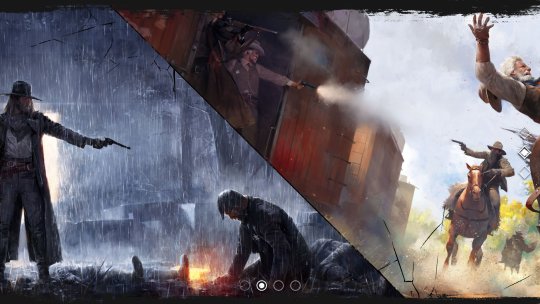
Become an outlaw in the west (Wild West Online 2016)
Technological advances have allowed users an affordance to explore alter egos and escape reality through social networked interaction but how do users know where the borders and rules of the online world begin and end (Young & Whitty 2010, p. 1230). The magic circle theory developed by Johan Huizinga in 1939’s describes how a playing field is physically marked out “allows for the change of everyday rules and the transformation of acceptable behaviour rules” (Zwart & Humphreys 2014, p. 91), in traditional terms these are the white lines of a football pitch but online gaming networks like EVE are governed by terms and conditions which are designed to enforce the magic circle. However, participating in a game with other real-world users where the narrative explores murder, deceit and provocation the digital lines of the magic circle can become extremely blurred at times.
youtube
Racist Trolls Online (Tech Insider 2018)
Gaming Technology affords connection and a majority of players verbal interact through headsets blending their real and gaming environment together. Above is a video narrated by Terrence Miller where he discusses his experiences as a black gamer and the abuse he's been subjected to online. During the video, Miller talks to Kishonna Grey, a scholar from Arizona State University who discusses the normalisation of racism gamers of colour feel due to ongoing verbal assaults By other users (Tech Insider 2018). Network gaming affords escapism from reality but at times they raise moral questions about how far some players push its pixelated borders. I can only wonder as these online networks expand how far will technology and societies morals be pushed? Although seen as science fiction, Westworld (HBO 2018) which see’s networked cyborg experiences blended with reality have already begun through network gaming platforms.

Westworld (Lousolversons 2018)
Reference List
De Zwart, M & Humphreys, S 2014,' The Lawless Frontier of Deep Space: Code as Law in EVE Online', Cultural Studies Review, vol. 20, no. 1, pp. 77-99.
HBO 2018, Westworld, HBO, 28 May 2018, <https://www.hbo.com/westworld>.
Lousolversons 2018, ‘These are all just roles’ [image], tumblr, 28 May 2018, <https://lousolversons.tumblr.com/post/174118225401/you-feel-free-to-command-everyone-else>.
Tech Insider, Racist Trolls Are Still Dominating Video Games, 11 April, viewed 23 May 2018, <https://youtu.be/vPspkEB6l18>.
Wild West Online 2017, Sneak peak on BIG upcoming, 17 May, viewed 27 May 2018, <https://pbs.twimg.com/media/DdXL9PdVAAAwxUJ.jpg>.
Wild West Online 2018, Wild West Online, Wild West Online, viewed 26 May 2018, <https://www.playwwo.com>.
Young & Whitty, 2010, ‘An Exploratory Study of Trolling in Online Video Gaming’, International Journal of Cyber Behavior, vol. 2, no. 4, pp. 17-33.
14 notes
·
View notes
Text
Great post, you really have covered the complex and multifaceted world of crowdsourcing. There are so many different platforms used by traditional media gatekeepers to help and inform individuals in crisis situations as well as individuals who enact their digital citizenship to help the community in times of crisis. The Queensland floods are a great example of both government agencies and public citizens using digital networks to inform the public of real-world circumstances.
You may be interested in this article going all the way back to the Queensland floods in 2011 and how police and emergency services used platforms like Twitter and the hashtag #qldfloods to inform and monitor the situation.
How Twitter played a vital role in the QLD floods
BLOGGING 2B CROWD SOURCING IN TIMES OF CRISIS
Social media platforms are proving themselves to be effective for sourcing funds in different situations including circumstances of crisis, sourcing funds for difficult hardships and for supporting business or charities.
Crisis Support
Catastrophes, disasters including floods, bush fires and famine can have funding sourced through social media platforms. Awareness and support for tragic circumstances both locally and abroad can be distributed quickly and efficiently through popular social media platforms such as Facebook and Twitter.
RECENT EVENT FROM EARLY- April 2017
In April 2017 cyclone Debbie came upon the North coast of Queensland causing an extremely low weather depression that caused severe flooding to the south along central Queensland and much further south into Brisbane, Gold Coast and the far north of NSW. Being a resident of Murwillumbah I saw Facebook community groups rally for support and information. People were informed how they could help and where they could leave food and clothing through the information provided through Facebook community groups. It was actually Facebook that provided information for the huge amount of support for hands on activity to help clear wet sodden furniture and belongings from houses in the many flood zones of townships around Murwillumbah and Lismore.
https://www.brisbanetimes.com.au/national/queensland/baked-relief-back-in-action-in-wake-of-cyclone-debbie-20170403-gvcc0q.html

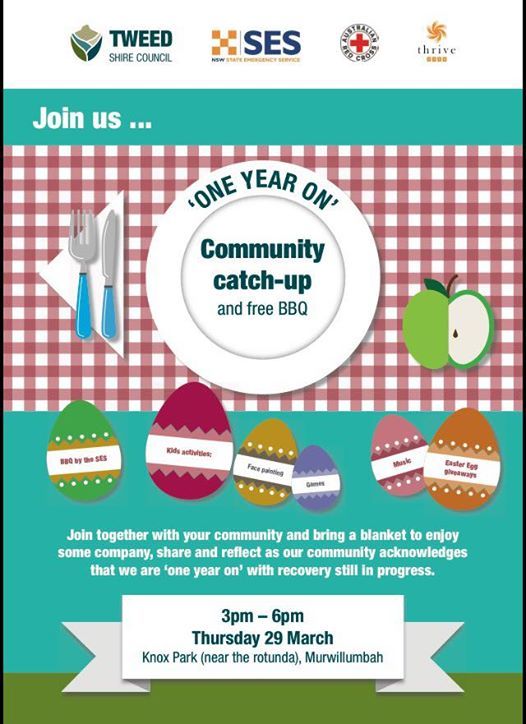
http://www.abc.net.au/news/2018-04-01/murwillumbah-the-town-that-refuses-to-define-itself-by-disaster/9602180
Just as importantly social media was also effective for up to date information on where the worst flooding was occurring and what roads were blocked. Because there was an issue with high tides on the river as well as huge measurements of ongoing rainfall, social media kept up to date information through government websites to inform residents using cell phones on the crucial developments and changes of conditions throughout the region.
To the north in Queensland during Cyclone Debbie local groups communicated in a variety of ways by door knocks, through radio, website and social media. ‘Most emphasised that the local council websites were the communities source of truth’. These websites provided additional information linked from their websites to a dedicated Facebook page. Others like the Whitsundays used social media exclusively making their dedicated Facebook page the point of truth (Queensland Government 2018). The Cyclone Debbie Review issued by the Queensland Government (2018, p.46) states that the Facebook approach allowed easy and shared community feedback and replys to the page. The Facebook environment allowed people in the community as well as council to respond providing clarity where possible. Despite extended periods of power outages affecting communication, councils continued to push messages through council websites and through their connected Facebook pages. These were focused on service delivery, power outages, water supply, waste collection and clean up activities as these services came to be active.
Below is a link of an announcement on Twitter issuing an evacuation order to parts of Tweed Heads on the southern Gold Coast region.
https://twitter.com/NSWSES/status/847424438085730306/photo/1
Family Crisis Related Funding
Tragic circumstances can hit families hard in times of sickness and hardships. Social media can often assist in sourcing funding for people doing it tough. A child may be unable to go to school or a parent unable to work because they are fighting a sickness in hospital or being looked after at home by parent carer. This can put a financial burden upon a family while trying to pay bills and mortgages. Setting up a page and distributing it across social media platforms can be a way to source funding for financial difficulties during times of hardship due to sickness. The challenge of this type of activity is to have the release of the funding pages at the right time, in the right places directed at the right audiences. So much information is released throughout the digital world and a small funding project may be swimming with hundreds or thousands of other funding pages asking for help in genuine times of need. Of course there is also concerns of legitimacy of funding pages. The best boundary spanning of mediums for these projects are often television programs that expand the coverage of these peoples’ stories to a broader audience. The television programs bring the story to life and often bring an emotional reaction from the audience leading to an action. Most current affair or morning shows mention these types of situations regularly and then invite the audience onto an internet link to be able to contribute to a crowd funding page.

A quick search through the The Project’ s Tenplay site has at the time of writing a link to Avery Go Fund Me and another to the Avery Facebook Page. There possibly is countless people in circumstances such as this so people in this unfortunate circumstance may benefit a little more by the added exposure of the television program linking to the crowd funding pages.
Business and Funding for NGOs
Often emails are sent trying to bring awareness to issues of environmental concerns and ethical situations. If these emails are clicked then it often leads to a social media page or encourages the viewer to share the issue on their personal ’socials’. This often presents an online blog type article on the issue that is asking for funding or further sharing of the issue. Green Peace and Stop Adani often use this method to either participate an action of petition signing, sharing on social media or asking for donations. Often they will ask the participant to do a combination of all these.
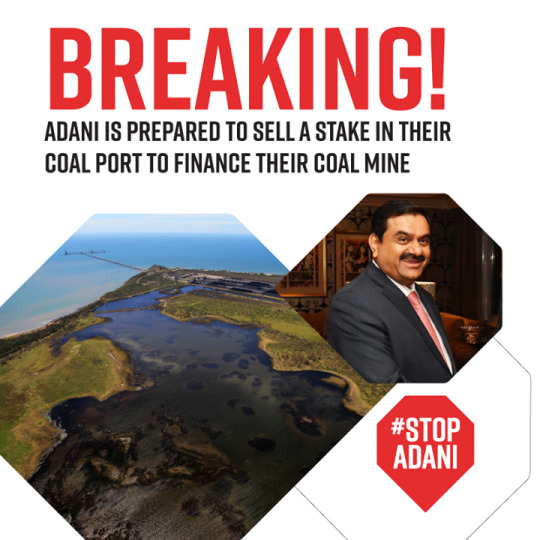
Small start up businesses can often be found across web platforms asking for a hand out to support them in their fresh ideas and to help them set up in the initial periods of heir early business stages. This can be challenging to capture the audience’s imagination and originality while determining the cost- payback could be the key to any financial assistance. Not to mention all the other start ups seeking funding in this market pool. If dedication, hard work and commitment to causes are seen as inspirational then this entices publics to take action to help out in a cause that can be backed with belief (The Space 2018).
http://thespacecairns.com/your_startup//funding_your_startup
New NGO type start ups are often successful in the reaching out for assistance across social media funding as they directly assist people who appear to be facing challenging circumstances and are doing it tough. Orange Sky is a mobile laundry that assists homeless people in providing free washing and drying of clothes. Orange Sky provides opportunities for the public to donate and volunteer. Business partners can also put their name to the cause through sponsorship. Orange Sky do this crowd sourcing and crowd funding type promotions through their well designed web page and through Facebook, Instagram and Twitter (Orange Sky Laundry 2018).
https://www.bing.com/videos/search?q=orangesky+laundry+youtube&view=detail&mid=A132ABE729CF76198968A132ABE729CF76198968&FORM=VIRE
References
Queensland Government 2018, ‘The Cyclone Debbie Review’ Inspector-General Emergency Management, Report 1: 2017-2018, Brisbane.
3 notes
·
View notes
Text
This is a great little read, you make a good point that activism is not a new product and by majority carried out by societies youth. Social networks afford younger generations a strong platform to proactively question the morals of society. #Marchforourlives is a good example of how social networks can be used as a platform to mobilise real action on the ground very successfully.
How Gen Z is changing the world, one hashtag at a time
As a quick introduction to the concept of digital citizenship, let’s unpack the term. A digital citizen is someone who uses IT to engage in society, politics, and government. ‘‘Digital citizenship’’ is the ability to participate in society online (Mossberger, K et al.). It is the duty of citizens to be informed in democracy. The higher percentage of young people online means that the information on the internet has the greatest impact on Gen Z and Millenials.
When Gen Z aren’t eating tide pods on the internet for fame and glory, they are spending their time fighting the establishment. Activism among the youth is not a new thing. In the 1910’s we had the Suffragettes, the 1960’s brought us Civil Rights and the Vietnam war protests, by the 1970’s it was abortion rights, and, in the present day, we have the Women’s March and the March For Our Lives. The last one was started by the students at Marjory Stoneman in Florida.

A Gallup poll states that the preference for stricter gun control is the highest since 1993, and CNBC notes that “more than any activists in a generation, they have managed to take over the conversation around gun control and American safety.” (Mejia, Z)
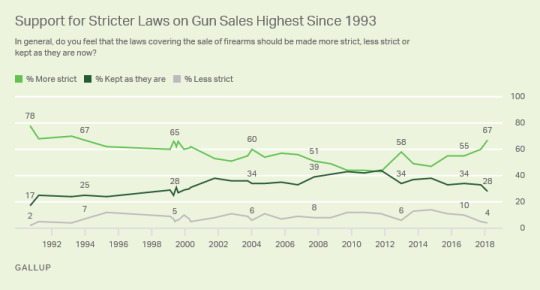
They’ve taken activism and protest online, raising awareness using hashtags. They’re still using traditional protest methods such as marches, rallies, and walkouts, but they’re shunning traditional media to get the word out about these events. They have more progressive views than previous generations. These ‘kids’ are out to change the world. They are the next generation of voters and, by the next United States elections, they will be old enough and angry enough to vote.
Let’s take a closer look at the activists behind March for our Lives. As I mentioned above, these young people attend Marjory Stoneman Douglas High School in Florida, USA. On February 14th, 2018, a gunman entered their school and killed 17 people. Their grief was compounded with their outrage that this person was able to purchase a semi-automatic weapon in a local gun shop. Instead of wallowing in their grief, they decided to do something about it. This began the online protests using the hashtag #neveragain. They used Twitter to tweet directly to their senators and to the president himself. Their tweets went viral as more and more people picked up the hashtag. Using the impetus from the media coverage of the shooting and their social media notoriety, they quickly organised a rally called, March for our Lives. It took hold around the world and became a global event.
They are our future and social media is the future of protest and activism.
References:
Mossberger, K., Tolbert, C., & McNeal, R 2008, Digital Citizenship: The Internet, Society, and Participation, MIT Press, Cambridge, Mass.
Mejia, Z 2018, 3 reasons Gen Z activists have changed the gun control conversation when no one else could, CNBC.com, viewed 8 May 2018, <https://www.cnbc.com/2018/03/14/how-gen-z-activists-have-changed-the-conversation-around-guns.html>
Jones, J 2018, U.S. Preference for Stricter Gun Laws Highest Since 1993, Gallup.com, viewed 8 May 2018, <http://news.gallup.com/poll/229562/preference-stricter-gun-laws-highest-1993.aspx>
4 notes
·
View notes
Text
Hi Flo,
I've been meaning to comment on your blog for a little while now, I've gone back a few weeks, this might be a blast from the past. This is a really great read you have touched on so many key points in relation to our learning material. One point you have made that specifically stuck out was your ideas about the distortion of information due to algorithms. I find this idea highly problematic, simply because you never see the other side of the story, in politics', its key to be able to make your personal decision based on more than one party, candidate or policy.
You really had me thinking about one of my favourite contemporary media theorists Eli Pariser and his ideas behind algorithms acting as a "Filter Bubble". If you're interested I have attached a link to an article discussing his ideas in relation to Trump and Brexit, once again great read.
Article
"Trust, but verify"
In this time of Communicative Capitalism (Dean 2013) we possess the civic responsibility of elections but the networks in which they are advertised to the voter have starkly changed. The mass segment of energized young voters now desire more from their candidate. They demand a constant and intimate relationship with their politician- the forging of a bond.

This transition towards further accountability, categorized by Dean as a change in the form of utterances, means our messages are now contributions. Using platforms like Twitter, Facebook and Snapchat we can follow the individual in their daily tasks in order to have further insight on their policies and beliefs. This provides a personalised connection and cements the journey between candidate and constituent. Previously, this could only be accomplished through door knocking and the sending of physical letters. Sites now provide the means on which any politician is accessible through Twitter replies, Facebook comments, live feeds and YouTube comments. A clear advantage of this evolution is the transparency it’s created, ensuring the true nature of the individual is seen (sooner or later). The immediacy that characterises these networks make rehearsed speech a seemingly impossible task.

Contrarily, this stark exposure makes the candidate a target. The candidate creates an ego identity, prompting themselves to what a politician ‘should’ be based on voter ideals and advisor recommendations.

As citizens we must understand that our digital footprint directly affects the function of the algorithm. Basically, every search on google, like on Facebook or follow on Instagram means your actions are saved within metadata which paves the way for how information is then provided to you. Your searches on Google will then be a reflection of what you have previously searched or links you have clicked on. Facebook will recommend pages or friends who align to your beliefs or interests. This distortion of reality also presents a huge fundamental issue in politics. Traditional platforms like Newspapers or televised News has shown an array of opinions which one could not ‘filter’.
“Following audience preferences may sound democratic but it has some worrying implications. In particular, it can become a reinforcing, - rather than a challenging – of popular prejudices” (Young 2010).
Although some traditional channels or editorials could be swayed to a certain extent they could not be ignored. Today “time spent on online sites is only about 70 seconds per day, compared to 25 minutes spent reading a print edition” (Young 2010).

The immediacy of digital news has also become a problematic for the fact checking component of journalism. Information is so quickly released and replicated by thousands of aggregators (Young 2010) that many can propel erroneous claims or figures.
A single article can be a detrimental trigger to the reputation of an upcoming candidate or erode that of a recognized politician. The anonymity of the web has also birthed citizen journalists or produsers, those who consume and create content.
Similar to a live social experiment this will, as the years pass, differentiate the contenders from the true leaders. Nonetheless, it will be our obligation as citizens to demand journalistic integrity and fact checking to ensure the decisions we make are based on accurate evidence.

References:
Anon, (n.d.), Obama warns teens of perils of Facebook, [online] Available at: <https://www.reuters.com/article/us-obama-facebook/obama-warns-teens-of-perils-of-facebook-idUSTRE58762P20090908>
Cain Miller, C (2008) How Obama’s Internet Campaign Changed Politics, [online] Bits Blog, Available at: https://bits.blogs.nytimes.com/2008/11/07/how-obamas-internet-campaign-changed-politics/ [Accessed 12 Apr. 2018]
CSPAN (2009), President Obama and Secretary Duncan Discussion with Students, [video] Available at: https://www.c-span.org/video/?288771-1/president-obama-secretary-duncan-discussion-students&start=378 [Accessed 13 Apr. 2018]
DCU School of Communication 2013, IAMCR 2013 Plenary No. 3 - Jodi Dean, 3 July, viewed 9 April 2018, <https://www.youtube.com/watch?v=N5ABPuNQ6IU>
MIT Technology Review Editors (2017), A report card on @POTUS’s record on technology, [online] MIT Technology Review, Available at: https://www.technologyreview.com/s/603316/obamas-technology-legacy/ [Accessed 12 Apr. 2018]
Pickard, J, (2016), When politics and social media collide. [online] Ft.com. Available at: https://www.ft.com/content/27a7d6c8-702f-11e6-a0c9-1365ce54b926 [Accessed 13 Apr. 2018]
Young, S 2010, ‘News, political reporting and the internet’, in How Australia Decides, Cambridge University Press, Victoria, Australia
Image References:
Berry, P, Comment un roman français prisé du FN a influencé Steve Bannon, le conseiller de Trump. [online] Available at: https://www.20minutes.fr/monde/2025935-20170307-comment-roman-francais-prise-fn-influence-conseiller-donald-trump-steve-bannon
Schluman, K, (2017),The Obama Administration Digital Transition: Moving Forward. [online] Available at: https://obamawhitehouse.archives.gov/blog/2017/01/17/obama-administration-digital-transition-moving-forward
5 notes
·
View notes
Text
Hi Chanelle,
A really great read you had me thinkings and doing little research, I found a discussion which originally appeared on Radio National where they talk about “disinformation” (basically an academic word for Fake News). They discuss how the spreadability of online networks can be used as “systematic campaigns designed to deceive” and they go on to talk about bots and troll factories where people are being told what to type and who to target to spread disinformation, which I guess is a way of crowdsourcing fake new.
Once again great read - Is this news real or fake?
W8: Crowdsourcing & the notion of ‘reliability’
How many of us recall the typical nature of fundraising? Or picking up an encyclopedia to find information on or advice about something you knew nothing about? How about those times we needed to get somewhere and the only option was to conform to an inconveniently timed bus schedule and a route, which somehow still had you walking a third of the distance?
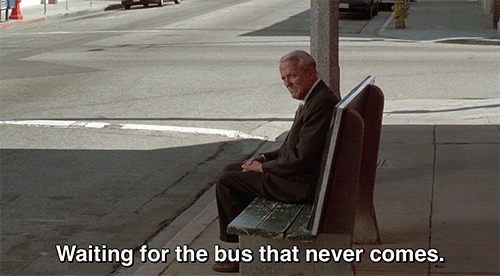
If any of those memories has you cringing at your computer – first of all, you’re not alone. Secondly, I’ve got good news for you: thanks to our modern internet, things like this have been dramatically transformed.
Our digital sphere has progressed to such an extent that it’s effectively reached new, revolutionary heights for the benefit of its users – we’ve been able to create new services, generate new sources of information, and even develop new modes of transport. Yep, transport.
Fundraising for a project close to your heart can now reach new international audiences at the click of a button, from the comfort of your own loungeroom – think GoFundMe. Individuals can now seek specific and even localized advice or information from friends and strangers by typing a few words on their keyboard – think advice-oriented Facebook groups. And lastly, we as commuters can now contribute to the convenience of a direct travel route for other commutes in exchange for cash, based on the concept of carpooling - think Uber.
Crowdsourcing
These new innovations describe the concept of crowdsourcing, made possible by our digital sphere. On a broader level, ‘crowdsourcing’ is described as an idea, task or concept that exists only by through the contribution and participation of others through offering work, skill, money or experience (Brabham, 2013, p. 3). When combined with the participatory nature of social media, it’s no wonder this is the newest revolution. This can allow users to gauge the real-life and real-time impacts in the wake of a disaster or crisis – in fact, journalists frequently now rely on twitter feeds and trending hashtags to generate accurate coverage on a breaking story. Risky, I know. You can read more about this in John Jewell’s analysis here.
It begs the question: with so many active participants on social media – how can we verify the information that is shared?
Studies reveal the public will rely on social media to find and share information in a crisis (Dailey and Starbird, 2014, p. 447), but it’s also no secret the internet is riddled with false or exaggerated claims. Heather Ford explores this common concern, and has revealed an effective method to ensure reliability is an established verification process of journalists, which includes; speaking to those on the ground via phone, investigating their identies and social accounts for evidence of locations, and sourcing (and citing) information from other journalists (Ford, 2012, p. 37).
However, in a time of crisis, how willing are journalists to adhere to these; and how much can we ever truly rely on the claims we see online?
Share your thoughts: Are you aware of an example where falsified information via crowdsourcing has sparked fake news to surface?
References
Brabham, Daren C, 2013, Crowdsourcing, The MIT Press, Cambridge Massachusetts; London, England
Dailey, D, Starbird, K, 2014, ‘Journalists as crowdsourcerers: responding to crisis by reporting with a crowd’, Computer
Supported Cooperative Work, vol 23, no 4, pp. 445-481
Ford, H 2012, ‘Crowd Wisdom’, Index on Censorship, vol. 41, no. 4, pp. 33-39.
Jewell, J, 2013, ‘How Twitter has helped the emergence of a new journalism’, The Conversation, viewed 8 May 2018, available via The Conversation
8 notes
·
View notes
Text
Ephemeral, Snapchat and RIRI
Historically the by-product of mediated experiences lies in the existence of physical keepsakes such as photos, recordings, things which serves as a reminder of either a private or public moment (Vivienne & Burgess 2013, p. 4). This affordance is extended to networks publics like Facebook and Pinterest where users build digital archives projecting their self-identity throughout the networks; this is referred to as the “persistence of social media” (Bayers et al. 2016, p. 957). But not all networks are designed to achieve persistence, to help me out here I’m going to call on an idea from Fredric Jameson's essay “Postmodernism and consumer society”, Jameson describes how consumer cultures exist in a state of “perpetual present” a state of nowness and endless change experienced in postmodern society (Jameson 1988, p. 28). Jameson was trying to understand a society that was constantly being bombarded with mediated experiences and images that were becoming increasingly ephemeral in nature.

Back to the mediated experience (Nerdreamer 2016)
Ephemeral media can be defined as communication that is momentary (Wakefield & Wakefield 2018, p. 44), the increasing convergence between offline and online has seen society embrace ephemeral mediated experiences, our reality has become augmented as technology takes advantage of mobile image-sharing platforms. Contemporary societies attachment to mobile phones has lead to the development of ephemeral mobile applications like Snapchat which concentrating on visually communicate. Snapchat, developed in 2011 is a stand-alone mobile application where images and short videos last for no more than 10 seconds. Snapchat does not anchor an image in a traditional sense rather textual communication such as, wording, emoji’s and augmented filters are placed within the image (Vaterlaus el al. 2016, p. 294). For Snapchat ephemerality is much more than concentrating on brief moments of mediated interaction, it has allowed the platform to become a leading mobile visual communication tool taking advantage of users self-portraits. Evan Spiegel, Snapchats brainchild explains, “Selfies makes sense as a fundamental unit of communication on Snapchat because it marks the transition between digital media and self-expression” (Herrman 2014). Snapchat embraces the ephemeral nature of selfie culture combining augmenting filters allowing users to enhance visual communication.
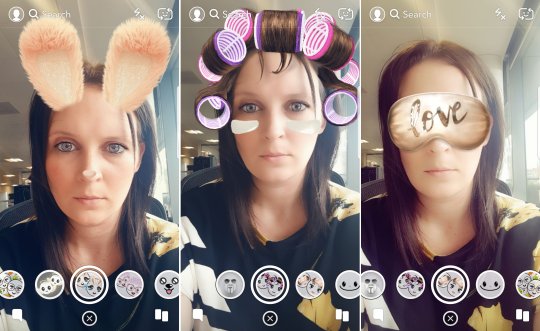
Snapchat filters (Black 2018)
Even though Snapchat embraces ephemeral visual communication it has not exempt the platform from privacy issues faced by persistent platforms such as Facebook. Snapchat has found that not all communications within the platform exist in the moment. A recent advertisement run on Snapchat for a game called “would you rather” asking users if they would slap Rhianna or punch Chris Brown. The material referring to a domestic violence innocent from the couples previous relationship forced Rihanna, a large influencer of the platform to publicly criticise and shut down her Snapchat account. Rihanna's withdrawal from Snapchat has seen the social media giant loose close to 1 billion dollars due to the unethical advertisement (Levin 2018). This case poses a number of ethical questions about what is visually being shared in the moment behind closed doors, and is it possible for ephemerality to truly exist in networked publics or does the ability to archiving out-weight ephemeral? What do you think?

Would you rather (Mann 2018)
Reference List
Bayer, J, Ellison, N, Schoenebeck, S & Falk, E 2015, ‘Sharing the small moments: ephemeral social interaction on Snapchat’, Information, Communication & Society, vol. 19, no. 7, pp. 956-977.
Black M 2018, ‘How to Use Snapchat’ [image], techadvisor, viewed 20 May 2018<https://cdn2.techadvisor.co.uk/cmsdata/features/3515801/adding_snapchat_filters.jpg>.
Herrman, J 2014, ‘Meet the Man Who Got Inside Snapchat’s Head’, BuzzFeed, 28 January, viewed 18 May 2018, <http://www.buzzfeed.com/jwherrman/meet-the-unlikely-academic-behind-snapchats-new-pitch#3dlvjg2>.
Jameson, F 2018, ‘Postmodernism and consumer society’, in A Kaplan (ed), Postmodernism and its discontents: theories, practices, Verso, London, pp. 13-29.
Levin, S 2018, Rihanna wipes $1bn off Snapchat after criticising app for making a 'joke' of domestic violence, The Guardian, viewed 18 May 2018, <https://www.theguardian.com/music/2018/mar/15/rihanna-snapchat-ad-domestic-violence-chris-brown>.
Mann, R 2018, Would you rather, 12 March, viewed 19 May 2018, <https://twitter.com/TheRoyceMann/status/973070617821007872/photo/1>.
Nerdreamer 2016, ‘Back to The Future, Jurassic World’ [image], I’ve got the dreamers disease, viewed 20 May 2018, <https://78.media.tumblr.com/5069d6c9a7a815ba8c940420e8da690f/tumblr_nzs8nz408T1rey868o1_500.gif>.
Vaterlaus, M, Barnett, K, Roche, C & Young, J 2016, ‘"Snapchat is more personal": An exploratory study on Snapchat behaviors and young adult interpersonal relationships’, Computers in Human Behavior, vol. 62, no. 1 pp. 594-601.
Vivienne, S & Burgess, J 2013, ‘The Remediation of the Personal Photograph’, Journal of Material Culture, vol. 18, no. 3, pp. 279-98.
Wakefield, L & Wakefield, R 2018, ‘Anxiety and Ephemeral Social Media Use in Negative eWOM Creation’ Journal of Interactive Marketing, vol.41, pp.44-59.
5 notes
·
View notes
Text
our digital footprint... forever increasing... oh dear!
Reading @thoughtsofchanelle ‘s response to an earlier blog with regards to how our information is viewed, stored and displayed on the net, for just about everyone to see… I thought I would ramble a little after I had an inkling into mine just now!
It’s clear, I can’t get into politics!
Way tooo many skeletons… A number of years ago, for a bit of fun, I typed my name into the harmless Google search bar to see what would happen…
…. then, there were a few pics, mentions of old positions I held, nothing too scary…
till today! all those years on, I have very much played into the “expose me” world of LinkedIn, Facebook, becoming a Google Guide, sharing and caring…
Within seconds, I’m faced with my “whole life” on a screen… ANYONE can see this, use this… sure it’s kinda cool in a way, I’ve achieved a lot, but Christ, I’m all over this thing!
OBrien Real Estate, everyone I’ve attached on our company website, my facebook profile, LinkedIn, Cardsite, even a video that I did 2 years ago!!!
Who would vote for a car hoon that happily screams around Werribee on occasions, and can even see that sometimes I come in first, and at times I hit a flag and get penalised…
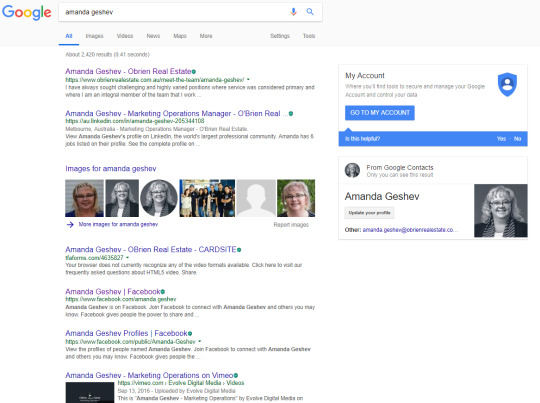
WAY TOO MUCH PRESSURE!
Is there a way to reverse this? … reduce my footprint… anyone… ????
… and now.. with this lil blog! I’ve added to it!!! arrghhh…
13 notes
·
View notes
Text
Hi Fran,
I'm heading all the way back to week 5 here, social media and citizen journalists really have changed the face of politics, more importantly, the shift in content that we receive through networked public’s produced or spread by unauthenticated sources. You make a great point, what if the "public’s decide that dedicated new sites are no longer needed". I think in a sense that is already happening, through user-created content, re-blogging and re-tweeting links to articles, digital networks can spread political information quicker then news outlets can authenticate or produce content themselves. Digital citizens are advertently or inadvertently persuade other citizens through mediated discourse bypassing traditional political and media gatekeepers (Penny 2016, p. 8).
Thanks for giving me something to think about and great work :)
Reference list
Penney, J 2016, Motivations for participating in ‘viral politics’, Convergence, vol. 22, no. 1, pp.71-87.,
A rose, a sign of standing …
MDA20009 Digital Communities Blog: Week 5

How does social media hail younger demographics’ consumerism that shapes them into proper grownups, capable of handling first relationship responsibilities of public discourse and outcomes? How do political agendas conscript youth, especially under 30’s, creating brand loyalty, inspiring activists for ideologies (Young 2010)? With traditional news outlets no longer the head of the media rocket, social media as an increasingly UGC platform affords immediacy, increasing diversity and potentially mediating more genuinely as the people’s voice (Young 2010, p.205). I get the obvious of why politics and social media are such great bedfellows with strong chemistry – social media is that volatile colourful dynamic ‘it girl’ or bachelor that will get a candidate noticed out in public(s) (Young 2010, p.205)!

http://www.outside-the-line.com/blog/kloppenburg-vs-prosser 20.4.18
Advantages of social media platforms pursuing social media channels of political comment is the scale of weak ties immediately created via engagement and energetic tracking of meta data the 25’s and under can bring to the party (Young 2010, p.207). But just how serious is this synergy between politics and social media? If traditional news websites and blogs from 2004 are anything to go by, will we soon be witnessing MalcomTurnbullshites.com and BillShortencomings.com blogs to rep for our upcoming elections discourse (Young 2010, p.209)? Judging by the ABC’s political websites, the dashboards are distinctly orientated around which media celebrity and where to hook up rather than the content, with promotions about what packaging you want it in (Young 2010, p.210). If Youdecide.com (2007) is an indicator, to attract networked individuals to a date with political destiny, the packaging better be framed in a disruptive, sexy and/or controversial manner to cut through all the other media product and intepellate (Young 2010).
youtube
https://youtu.be/VN1wFInea20
In fact, my Tumblr site could rep for a ‘wham bam, thankyou ma’am’ approach and host ‘Val Halarin, chief economist of Gogglebox’, who promises to give political facetime in under seventy seconds so you can headline check your updates at work while tapping the campaign trail (Young 2010, p.218).
But if publics decide that dedicated newsites are no longer needed as a wingman, who will chaperone for quality and accuracy and will reckless decisions be made rushing to be the ‘produser’ with the scoop? In the who does what and how of political mediations, trad platforms like dedicated newsites and psephology blogs fiercely protect the authority and expertise they invest in their media product (Biro 2016). They strive to show civic integrity from collective peeps who have a stream of media work in common, rather than common peeps who have a stream of media work (Biro 2016).
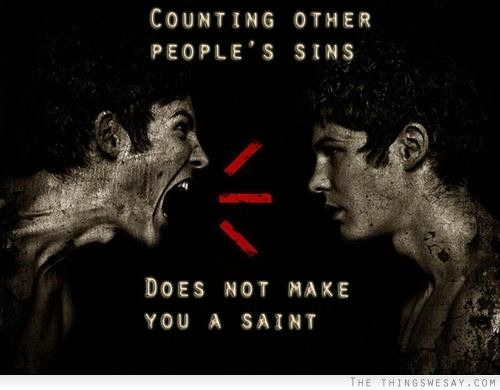
http://www.quotemaster.org/Counting+people
Personally, I would love to see my media product on a massive architectural site of hangers on and only if it reflected responsible communication standards underpinned by authenticity of content (Jericho 2013, p.254). But be warned, you may be meta dated as human capital by my host platform.
youtube
https://www.youtube.com/watch?v=jB8AW23GIoE
In the meantime, would you please accept this rose?…
REFERENCES:
Biro, A 2016, ‘Responsible journalism, democracy and the newspaper crisis’, CCPA Monitor, 23, 2, pp. 36-37, Academic Search Complete, EBSCOhost, viewed 19 April 2018
Jericho, G 2012, 'How many votes are there on Twitter?’, in The Rise of the Fifth Estate, Scribe, Victoria, Australia.
Young, S 2010, 'News, political reporting and the internet’, in How Australia Decides, Cambridge University Press, Victoria, Australia
5 notes
·
View notes
Text
Great post,
The video "The science of Internet Trolls" really helps understand the complex motivations and psychological aspects of an online troll, I have always considered bullying to be about a power exchange or asserting a dominance so this shakes my thought pattern up a bit. I don't think we are all troll's, though online provocation is a side effect we sadly need to be aware of in our increasingly digital connected lifestyles.
I have never personally been the target of online bullying, though at times I have received some nasty comments from other users who have disagreed with my view on Twitter. In cases like that, I choose not respond I don't see any point in adding to negative conversations.
When I was researching online provocation I was reading a lot of articles about the effects of online bullying, its reach and the affects of cyber bullying. I have a link to an article you may like just outlining UNICEF's findings of youth bullying on a global scale.
http://unicefstories.org/2016/08/12/6-illuminating-facts-that-prove-bullying-is-a-global-issue/
Social Media Trolls - don’t just live under the bridge! They’re everywhere!

Take a look at this guy - are all trolls this damned cute!
I’m afraid not, this little guy could easily spend some time on my desk at work, help me to reminisce the old days when these lil guys were so popular and represented fun! Twirling their hair, stick them on the end of pencils. Those were the days…
Even the trolls of the fantasy world tend to live under bridges… isn’t that what we were told? We knew what they looked like, some even had a name! They certainly didn’t have keyboards to hide behind nor have the have the access that individuals do now..
Back to the reality of today.
The more ugly of the variety, live behind their keyboards and do their work in anonymity! These are the absolute worst kind!
According to AsapSCIENCE 5.6% of individuals who like to chat and communicate online, identify themselves as “trolls”. So what makes an internet troll?
Are there any traits that are common?
Yes, say AsapSCIENCE, the study conducted by scientists of the 1200 internet users they interviewed reflected common traits which they’ve colloquially called “dark traits” (AsapSCIENCE, 2016).
youtube
These horrible individuals have high levels of Psychopathy, Narcissism and Sadism (AsapSCIENCE, 2016)!
What a combination eh?
So how do these 3 traits reflect in an individual… as outlined by Keith Campbell who states that a narcissist is an individual who shows elevated and sometimes detrimental self-involvement behaviour (Campbell, 2016). Furthermore, Sadism can be defined as one creating pain without pity on others as outlined by
SDictionary in their video created in 2015. In a nutshell, internet trolls are attention-seeking individuals who relish the pleasure of hurting others!
WOW.
Just the type of person you’d love to bring home to meet your family right?
Or am I just being too harsh? We enjoy watching a good fight on TV? Does that make us evil? According to AsapSCIENCE it does not. Would you believe there is a condition called “everyday sadism” - which covers exactly this! We like a “little pleasure” in someone else’s pain? Just a little? (AsapSCIENCE, 2016)
Would this just mean that ultimately, we’re all trolls in some way? No, I believe as AsapSCIENCE do, that a combination of high levels of Sadism, coupled with argumentative and disruptive behaviour (anti-social behaviour) lead to a “successful troll” (AsapSCIENCE, 2016).
So how do we minimise the impact on us from internet trolls?
Simple, according to AsapSCIENCE, “negative feedback only encourages continued negative comments” (AsapSCIENCE, 2016). They suggest we simply ignore them which will reduce their efforts.
This would ring true I feel as the characteristics of the sadist and narcissist feed off continued communication. Remove it, and the “fun is gone”. Remember, the troll wants to disrupt you and hurt you.
Having been trolled once or twice recently on Facebook, and being awfully hurt, I simply de-friended / blocked the individual as my means of action….
Have you been trolled? What platfom was it in? What did you do to shut it down? Do you think “ignoring” fixes or reduces it?
Would love to hear your thoughts…
References:
‘TROLL-THUMB-1′ [image], viewed 29 April 2018 <http://www.marieclaire.co.uk/news/it-s-official-men-who-troll-women-are-losers-literally-61865>
AsapSCIENCE 2016, The Science of Internet Trolls, Jan 17, viewed 29 April 2018, <https://youtu.be/6Zxy_dScjsM>
SDictionary 2015, Sadism, Apr 14, viewed 29 April 2018, <https://www.youtube.com/watch?v=InHNTiRdjlY>
W. Keith Campbell 2016, The psychology of narcissism, Feb 23, viewed 29 April 2018 <https://www.youtube.com/watch?v=arJLy3hX1E8 >
2 notes
·
View notes
Text
The collective nature of the crowd
Crowdfunding has become a bit of a buzzword over recent years, so firstly let's look at what is crowdfunding? It's a fundraising practice that utilises connections much like networked publics to gather funding in support of a specific project (Doan & Toledana 2017, p. 38). To put this practice into a fun pop-culture perspective we can look at a successful crowdfunding campaign instigated by Kevin Roberts in 2013. Veronica Mars, a detective drama following the adventures of a high school/college student by day and teen detective by night was revitalised as a feature-length film through networked crowdfunding seven years after the series was cancelled from network television (Yahr 2014). Roberts employed the help of Kickstart.com, a website dedicated to helping raise funds for creative projects. Roberts initially requested $2 million dollars for the project but by the end of the crowdfunding campaign, he had raised a staggering $5,702,153 (Hills 2015, p. 2). If you consider that this project targeted a very specific niche demographic it highlights the impact and possibilities of using networked publics to generate connections by utilising the affordance of spreadability to link dispersed individuals who can come together to fund a common goal, it also tells me that teen detective dramas are wildly more popular and I may be missing out on quality television.
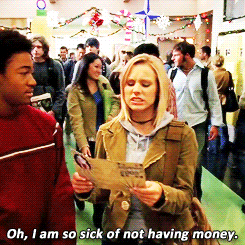
Veronica Mars (Shellstropaljamil 2016)
If it’s possible to not just generate involvement but to exceed expectations for the value of entertainment, can we take the same basic principle of using online networks collective nature and converge in collective democratic action? This is exactly what the developers of Ushahidi proceed to do in the aftermath of the 2007 Kenyan elections. Post-election protests turned into widespread violence, which leads Kenyan blogger Ory Okolloh to make a public appeal to her followers asking for ideas of how it may be possible to collect information regarding the names of Kenyan citizens who lost their lives in the violence throughout this turbulent period. Approximately twenty develops came to the aid and offered their time and labour to develop a tracking system via SMS and an online platform, and in a week Ushahidi was born (Ford 2012 p. 33-34). Ushahidi was developed through the collective nature of crowdsourcing, crowdsourcing goes beyond the collective funding, crowdsourcing commodity is people power, its a collective of individuals and their skills sets brought together to create and find solutions to a task or problem (Shepherd 2012, p. 11).

Crisis Mapping Japan (Ushahidi 2011)
Ushahidi’s success is its ability to utilize networked publics affordances of direct participation, as Henry Jenkins eloquently states, “crowdsourcing is about shifting the power relations between audience and producers” (2013 p. 248). The collective nature of Ushahidi promotes the co-creative involvement of collective groups establishing a bottom-up networks (Zorina 2016, p. 85). Since the turbulent Kenyan election of 2007, countless Ushahidi maps have been developed in over 159 countries (Hyman 2014, p. 28) to track an abundance of social, political and environmental issues. Ushahidi is a constantly evolving platform with users embracing the affordance of crowdsourcing collaborative nature helping to stimulate a worldwide social consciousness “to help improve the bottom-up flow of information” (Ushahidi 2018).
youtube
Ushahidi's Crisis Mapping in 40 seconds (99 Faces TV 2011)
Reference List
Aljona, Z 2016, ‘From a competing to a collaborative crowd: Tactics for co-creation with innovative bottom-up communities: Tactics for co-creation with innovative bottom-up communities’, Organizational Dynamics, vol. 45, no. 2, pp.80-93.
Doan, M & Toledano, M 2018, ‘Beyond organization-centred public relations: Collective action through a civic crowdfunding campaign’, Public Relations Review, vol. 44, no. 1, pp. 37-46.
Ford, H 2012, 'Crowd Wisdom', Index on Censorship, vol. 41, no. 4, pp. 33-39.
Hills, M 2015, ‘Veronica Mars , fandom, and the ‘Affective Economics’ of crowdfunding poachers’, New Media & Society, vol. 17, no. 2, pp.183-197.
Hyman, P 2014, ‘Peace Technologies' Enable Eyewitness Reporting When Disasters Strike’, Communications of the ACM, vol. 57, no. 1, pp. 27-29.
Jenkins, H, Ford, S & Green, J 2013, Spreadable Media - Creating Value and Meaning in a Networked Culture, NYU Press, Ebook Central (ProQuest).
99 Faces TV 2011, Ushahidi's Crisis Mapping in 40 seconds, 24 March, viewed 17 May 2018, <https://youtu.be/SakTPDHs6iI>.
Shellstropaljamil 2016, ‘Veronica Mars Amazing’, [image], Tumblr, viewed 17 May 2018, <https://78.media.tumblr.com/9da1690a02ecc1f6ca8281bddd9588ae/tumblr_nmjn88Iuo11rohg16o3_250.gif>.
Shepherd, H 2012, ‘Crowdsourcing’, Contexts, vol. 11, no. 2, pp. 10-11.
Ushahidi 2011, ‘ Crisis Mapping Japan’, [image], Ushahidi, viewed 17 May 2018, <https://2ee8a9b674d3b6a52133-b7785f8c6e03b0b67de30b88e1b0fcb9.ssl.cf2.rackcdn.com/2011/04/sinsai-500x348.png>.
Ushahidi 2018, About Ushahidi, Ushahidi, viewed 15 May 2018,<https://www.ushahidi.com/about>.
Yahr, E 2014, ‘Veronica Mars’ creator Rob Thomas explains how his canceled show rose from the ashes for a groundbreaking movie, The Washington Post, viewed 15 May 2018, <https://www.washingtonpost.com/news/arts-and-entertainment/wp/2014/03/13/veronica-mars-creator-rob-thomas-explains-how-his-canceled-show-rose-from-the-ashes-for-a-groundbreaking-movie/?noredirect=on&utm_term=.d3b70ae07666>.
12 notes
·
View notes
Text
Hi Florence,
Great read, your entry really got me thinking with this one. It seems that society in large accepts online provocation and bullying as a practice manufactured by a younger generation, but as you have suggested acts of racial abuse and violence are not new to society. So what has changed? The medium itself, networked publics afford spreadability and an ongoing connection allowing for exposure of provocation and bullying it to a wider community.
I found a quick clip you may be interested, its Dana Boyd discussing her book “It's Complicated” which deals with teenagers issues in an increasingly mediated social society.
Dana Boyd “Its Complicated”
Indecent (E)xposure
Society is in disarray and it seems cyberbullying is the trending offender. Parents, teachers and workplaces alike have absorbed this term as an all-encompassing umbrella with which to label any kind of negative remark. An issue which boyd (2014) affirms “has become a national obsession”.
While cyberbullying is a major concern, is bullying really worse today? or are we all under individual spotlights that manifest in this new transparent social environment?
Many are quick to fault this new generation as callous but I beg to differ.
Same youth, different weapons.
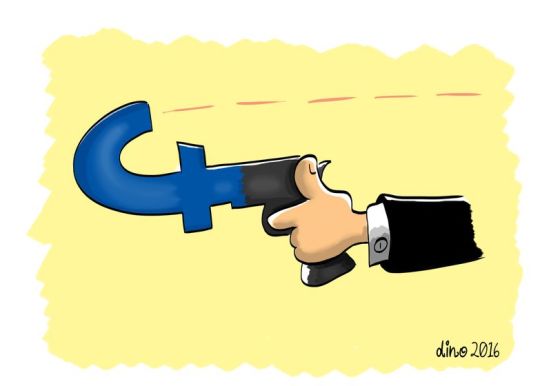
Bullying has forever been a prominent issue within group environments, particularly education and predictably nothing has changed. The social hierarchy the education system fosters, sits within a hormonal and developing group of individuals creating a tumultuous setting. Our parents recall getting picked on and no one really speaking out about it. They refer to instances of neighbourhood disagreements, attested mainly to sports like soccer or rugby. In Australia, it’s also common to hear of verbal or physical abuse between ‘Aussies’ and ‘Wogs’, a wound born from racial divide and slow integration of nationalities. Often unreported and seen by few peers, these abuses have been concealed or forgotten. In today’s age of transcribed online activity this is impossible. Facebook chats, Instagram images, e-mails and WhatsApp audios are all embeded, recorded and stored to ensure every last detail is kept and used as potential ammunition. boyd discusses social medias role in “amplifying the visibility of bullying”. This digital visibility assures others can see, participate or be sent content of virtually anything.
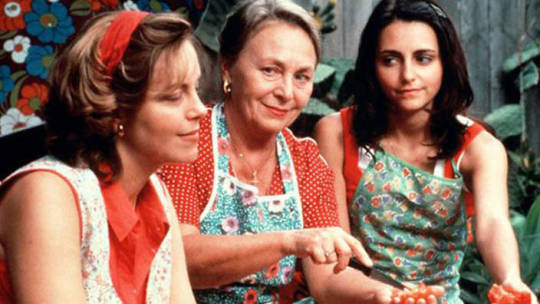
Make no mistake, there is no place in our society for bullying nor should there be but to attest cyberbullying as a novel tendency would be a gross misconception. The battle continues to be ‘hands on’ just in a different way.

Context is everything and in the microcosm that is the internet this is rule number one. This transparency inherently involves a wide array of actors whom, coming from different cultural backgrounds and tech competencies can perceive situations in very different ways. One cannot compare their perception on a topic to that of their parents or grandparents. The younger the generation in question, the faster the technological advances move. This is a direct product of the breadth of information available on the web. These differing views and opinions have been a propeller for the misuse of the cyberbullying term. There is little public understanding or general knowledge about cyberbullying and its characteristics but nonetheless it a term consistently used to label online activity. Generational gaps cause adults to often misinterpret what boyd labels ‘drama’, a digital Chinese whispers if you will, with gossip. The internet becomes frightening only to those who do not understand it.
#staywoke

References
boyd, D 2014, ‘Bullying: Is the Media Amplifying Meanness and Cruelty?’, in It’s Complicated: The Social Lives of Networked Teens, Yale University Press, New Haven, USA, pp. 128-52.
McCosker, A 2014, YouTrolling as provocation: Tube’s agonistics publics, Convergence, vol. 20, no. 2, pp. 201-217.
Mouffe, C (2005), Chantal Mouffe: Agonistic Democracy and Radical Politics, [online] Pavilion Journal for Politics and Culture, Available at: http://pavilionmagazine.org/chantal-mouffe-agonistic-democracy-and-radical-politics/ [Accessed 1 May 2018]
Image references
Cartoon Movement (2016), Facebook: A misleading weapon. [image] Available at: https://www.cartoonmovement.com/cartoon/27473 [Accessed 1 May 2018]
SBS (2013), Looking for Alabrandi, [image] Available at: https://www.sbs.com.au/movies/review/looking-alibrandi-review [Accessed 1 May 2018]
5 notes
·
View notes
Text
Hi Fran, this is a great read, you have come up with some really interesting ideas and there is one question on your blog where you ask: “are kids simply copying the communications ‘burn outs’ of their elders on a digital highway?”.
In one of the reading's I researched it suggests that online provocation between adults is labelled as "Cyber Harassment or Cyber Stalking" (Kowalski et al. 2008, pp. 47). This suggests a difference in perception between adult and youth digital citizenship which I see as problematic. The online actions of adults help younger generations build there own personal perceptions and boundaries on social networks. As a society, mature digital citizens have a moral obligation to show younger users that social networks can be used to create constructive discourse without sinking to a level of bullying.
Great read Fran.
Reference list
Kowalski, R, Limber, S & Agatston, P 2008, Cyber Bullying: Bullying in the Digital Age, Blackwell Publishing, EBook Central (ProQuest).
Shadows of irony under the bridge …
MDA20009: WEEK 7: Digital Citizenship 3: Trolling and media conflict
Wilson et al (2013) talks about the dark arts of flaming, hating and trolling as techniques using digital platforms to gamify social media spheres, eliciting attention, performing one-upmanship, setting up unsuspecting networked passers-by for negative experiences. They frame trolls as knowing, deliberate, calculated and manipulative in their end game of hijacking market segments of digital attention, with an intricacy based on cues and clues (Wilson et al 2013). But it is important to note they also advise that distinguishing trolling can be a matter of aesthetics and can lead to problematic judgement of ways to generalise an individual and their emotional identity – one person’s trolling is another’s healthy political debate (Wilson et al 2013).
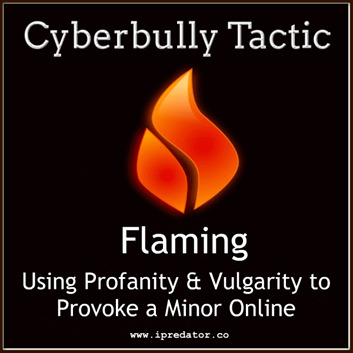
It also begs the question that in the well structured, plotted and developed detective game of trolling’s dynamic between identity and intent, how do we protect the most vulnerable (Wilson et al 2013). It’s clear that the speed of technological changes to our digital communities in turn changes society as we engage platforms of social media networks (Fuller 2014). But as a species, if children still mimic adults, could some of their social media behaviours be attributed to ‘copied modalities’ rather than openness of tech usage – are kids simply copying the communications ‘burn outs’ of their elders on a digital highway (Fuller 2014)?
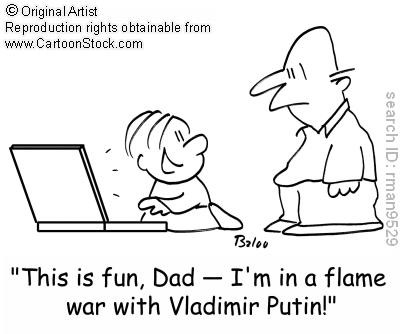
For digital minors, social media platforms are just as much a space where kids should feel safe and confident in their networked relations as schools, playgrounds and homes. This is somewhat ironic considering the empirical vulnerability in their real life community spaces. With this in mind, we have censorship and societal protection systems for broadcast commons of radio, television and cinema. So are we on track with governance of ‘third screen communities’ or do we trust that even though it is driven by peeps with all their collective acts of controlled folly, it will all work out in the end?
To capitalise on broader community understandings of cyber misuse and abuse, we need to bridge the gap between generational concepts of what was pre digital bullying and socially ‘gone too far’ and what is now deemed to be digitally supported extensions of antisocial behaviours (Fuller 2014). To truly manage and/or govern a platform, it’s prudent to use socially intelligent knowledge that genuinely and discretely recognizes its signs and cues for what they actually are, rather than lump it in with generalities because it is foreign or confusing (Fuller 2014).

https://workingsmartercafe.files.wordpress.com/2014/03
The quest for experimenting with a developing identity and trying it out for prominence and/or acceptance is still motivating social behaviours of digital citizens, and importantly our reactions (boyd 2014). Our digital citizenship presence on social media has made those behavioural elements more visible and traceable, if not always the results (boyd 2014, p.152). It is this very visibility that can be operationalised to guide impressionable identities away from embedding toxic social traits into the psyche of community and personal networked relations (boyd 2014).
youtube
20 years of study and research show negative behaviours can drive away digital citizens who ironically need online community spaces more than others and miss out on opportunities to send and receive messages of advocacy, activism and positive resistance (McCosker 2014, p.201). What digital citizens can consider is that online passions, contests, conflicts and vitriols all spring from real life human emotions (McCosker 2014, p.206). In the social relations remediated and reflected from our digital platforms, we can operationalise the techniques and digital tools of how trolling uses network structures to inject intelligent, provocative debate that attracts rather than repels visitors to the bridging platform (McCosker 2014).
Well, at least I flaming hope so …
REFERENCES:
Boyd, D 2014, ‘Bullying: Is the Media Amplifying Meanness and Cruelty?’, in It’s Complicated: The Social Lives of Networked Teens, Yale University Press, New Haven, USA, pp. 128-52
Fuller, G 2014, 'Cyber-safety’: What are we actually talking about?’, The Conversation, viewed 30.4.18, <http://theconversation.com/cyber-safety-what-are-we-actually-talking-about-23505>.
McCosker, A 2014, ‘Trolling as provocation: YouTube’s agonistics publics’, Convergence, vol. 20, no. 2, pp. 201-217, viewed 1.5.18
Wilson J, Fuller G, McCrea C, 2013, ‘Troll Theory?, The Fibreculture Journal: 22, viewed 30.4.18, <http://twentytwo.fibreculturejournal.org/issue-22-trolls-and-the-negative-space-of-the-internet/>
5 notes
·
View notes
Text
What a great read, I'm a big fan of Eli Pariser's work, he brings up some really interesting points and at times scary truths about the desaturation of information through filter bubbles.
One thing he touches on numerous times in his book is the fact the filters take away the ability for 'serendipity' through search, filters have a way leading us down a path built on our own preconceived ideas of how the world works. If we don't have the opportunity to search information that challenges or alters our own viewpoint how can we grow and make rational decisions especially on political and social topics?
If you're interested I have found an article by Luke Allnutt where he challenges Pariser’s idea of lost serendipity and that it probably didn’t exist before the internet anyhow (interesting argument though I do not agree with him): If the internet killed serendipity
Filter Bubbles & Democracy

During the early days of Web 2.0, the Internet’s affordances were considered a valuable tool for democracy, opening the gate for citizens to by-pass established media gatekeepers (Pariser 2011) allowing them to connect and share their opinions with one another, free from regulation. While the Internet has certainly given voice to many and a public sphere has formed, newer data collecting technologies may be stifling democracy.
Internet corporations such as Google, Facebook, MSN etc., now study our personal data through our browser cookies and Internet usage (Pariser 2011). This information is then analysed and processed through an algorithm, resulting in automatic online suggestions, specifically curated to what the Internet thinks we want to see (Haim et. al 2018). While this allows us to filter through the vast amount of information available on the web and have a more seamless and personal online experience (Haim et. al 2018), this can result in limited access to information. This process has been termed ‘filter bubbles’ (Haim et. al 2018), in where an individual’s online experience is limited to the bubble of information created for them by these Internet algorithms and at the same time filtering out seemingly irrelevant information.
What does this mean for democracy? As we continue to see, the Internet is increasingly becoming the preference for news consumption, especially for younger people (University of Canberra 2017). Filter bubbles have the potential to prevent different perspectives from ever reaching an individual, which can limit their world-view. This has adverse effects on our ability for proper civic engagement. The political online discussions and information we are presented with, and are presenting to others through content sharing, can be unknowingly tainted with bias because we are only offered content aligned to our own beliefs and ideas. For democracy to truly thrive online, mass-media must present a balance of news, providing diverse content which will enable citizens to make well-informed, rational decisions (Haim et. al 2018).
Eli Pariser, executive of the viral media production company ‘Upworthy’, suggests that gate-keeping, which is the control and dissemination of information and news to the public, has moved away from media professionals to these algorithmic systems (Ted 2011). While there have been criticisms in the past of how media gate-keepers regulated news to the point of marginalising voices in the community, Pariser argues that at least the regulation of information was done in an ethical way compared to the current algorithms we are seeing today (Ted 2011). The solution then rests on corporations to revise these systems, approaching data collection and algorithms in a humanistic way. By allowing different points of view to enter our ‘bubbles’ and challenge our own ideas, we are able to learn and grow as individuals and thus be empowered to truly partake in a democratic society.
To sum everything up, have a look at Eli Pariser’s Ted talk below:
youtube
References:
Haim, M Graefe, A & Hans-Bernd B 2018, ‘Burst of the Filter Bubble?’, Digital Journalism, vol. 6, 3, pp 330-343.
Pariser, E 2011, The filter bubble: What the internet is hiding from you, Viking, London.
Ted, Beware online “filter bubbles”, 2 May 2011, viewed 6th May 2018, <https://www.youtube.com/watch?v=B8ofWFx525s&feature=youtu.be>.
University of Canberra 2017, Digital News Report: Australia 2017, APO, viewed 7 May 2018, <http://apo.org.au/system/files/95161/apo-nid95161-346236.pdf>.
17 notes
·
View notes
Text
Trolling celebrities and the Twittersphere
Recently I‘ve had a number of conversations surrounding Twitter and abusive comments directed at celebrities by users of the platform, a common reaction to these conversations is “you'd have to have a thick skin to put up with that”. Twitter is a unique platform, it allows for open and candid interaction between users. To an extent Twitter has the ability to break down hierarchy between users, think about it, you're only one tweet away from a Ryan Reynolds retweet if you try hard enough (Murthy 2013, p. 4). But the affordance of direct accesses to public figures leaves high profile users open to provocation.

Direct access via Twitter, yes even Ryan Renolds (Gifhunterress 2018)
There is no clear-cut definition of what constitutes bullying; a lot of this has to do with the fact that different platforms have distinct and individual affordances for user connection. Some platforms are text or image based, some are open or closed networks, trolls manipulate these affordances to provoke users in repeated and direct emotional aggression (Boyd 2014, p. 131). When it comes to Twitter, trolls take advantage of the networks openness directly attack users while broadcasting their action to a seemingly endless public audience (Mizuko 2008, p. 7).
One of most highly publicised cases on online trolling in Australia started to surface in 2012. On the 30th of August, Charlotte Dawson a public figure who openly spoke out against online troll spent the early hours of the morning using Twitter to directly address and engage online trolls, her final tweet that night read “You Win x”, an hour later an ambulance was called to Charlotte’s house rushing her to hospital after she attempted to take her own life (World Entertainment New Network 2012). Two years later the trolls would win when Charlotte tragically committed suicide in 2014 (UPI NewsTrack 2014).
youtube
Charlotte Dawson confronts online trolls (J1Z07 2012)
Online harassment towards Charlotte Dawson is not an isolated incident; Twitter makes public figures accessible to platform users on a level never before which can lead to direct provocation by users. If this level of accessibility leads to trolling it can also be used by so-called “thick skin” public figures to highlight ongoing harassment across social networks.
Comedian Amy Schumer is one celebrity who is not afraid to speak her mind on social media. In 2016 a young film critic snapped a photo with Amy on the red carpet and posted the image to his Twitter account with the caption, “Spent the night with @amyschumer. Certainly not the first guy to write that #CriticChoiceAwards” (Gilbride 2016), below you can see Schumer’s Twitter response. Regardless of if this was a bad attempt at humour Schumer used Twitter’s affordance of openness to address online harassment to a large mediated public.
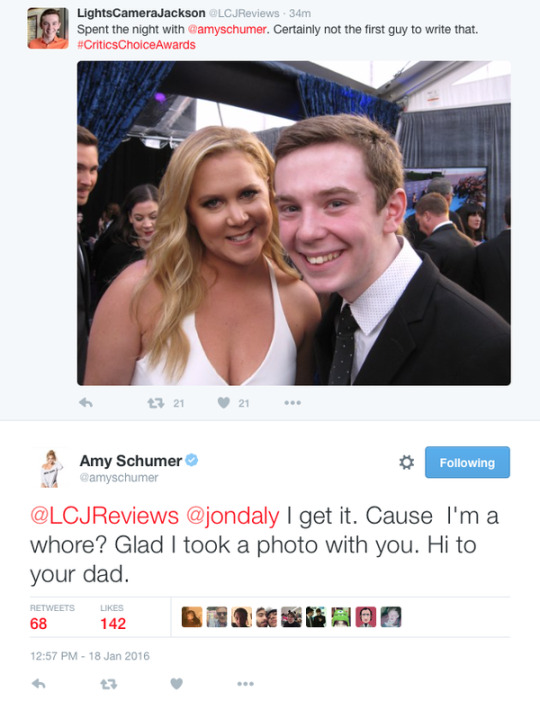
Amy Schumer calls out online Harassment (Gilbride 2016)
The exact definition of online provocation is murky at times but mediated acts of aggression and emotional assaults can result in devastating consequences due to the spreadability of networked publics, but the same platform used for public harassment can also become a powerful tool for in the fight against online trolls.
Reference list
Boyd, D 2014, 'Bullying: Is the Media Amplifying Meanness and Cruelty?', in It’s Complicated: The Social Lives of Networked Teens, Yale University Press, New Haven, USA, pp. 128-52.
Gifhunterress 2018, ‘Oh, my personal space’ [image], Giphy, viewed 4 May 2018<https://giphy.com/gifs/hunt-please-hunterress-Vkr4hV4J8kp3y>
Gilbride, T 2016, Amy Schumer calls out teen boy's sexist joke, Mashable Australia, viewed, 3 May 2018, <https://mashable.com/2016/01/18/amy-schumer-johnson-murphy/#p3UR4wO7aGqq>.
Gilbride, T 2016, ‘Johnson Murphy Amy Schumer Tweets’ [image], Mashable Australia, viewed, 3 May 2018, <https://i.amz.mshcdn.com/JesSLzbnH2Z9tgc0yFT7Ih4WY8A=/fit-in/1200x9600/http%3A%2F%2Fmashable.com%2Fwp-content%2Fuploads%2F2016%2F01%2Fschumer.png>.
J1Z07 2012, Charlotte Dawson tracks down and confronts Twitter Trolls, 23 October, viewed 4 Mat 2018, <https://www.youtube.com/watch?v=ASg8x9b2o0M>.
Mizuko, I 2008 ‘Introduction’ in Vamelis, K (ed), Networked Publics, MIT Press, Cambridge, pp. 1-14.
Murthy, D 2013, Twitter: Social Communication in the Twitter Age, Wiley, pp. 1-13.
UPI NewsTrack 2014, ‘Australia model, TV host found dead in Sydney home in apparent suicide, UPI NewsTrack.
1 note
·
View note